


Unleashing The Thrill Of The Mountain
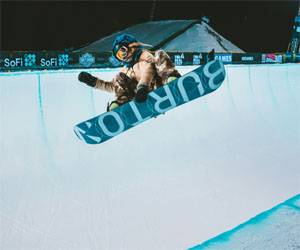
Snowboarding is more than just descending the slopes; it's an adrenaline-fueled playground for those who crave excitement and style. Stunts and tricks take snowboarding to a whole new level, transforming it into a dynamic art form where riders can express their creativity and athleticism. In this article, we'll delve into the world of snowboarding stunts and tricks, from the basic grabs to jaw-dropping spins and flips.
1. Grabs: Grabs are fundamental snowboarding tricks that involve reaching down to touch your snowboard while in the air. Some common grabs include the:
Indy Grab: Grabbing the heel edge of your snowboard with your front hand.
Mute Grab: Grabbing the toe edge of your snowboard with your front hand.
Melon Grab: Grabbing the heel edge of your snowboard with your back hand.
Adding grabs to your jumps is a stylish way to showcase your skills and enhance your tricks.
2. Ollies And Nollies: Ollies are versatile tricks where the rider pops the board into the air by shifting their weight and pushing down on the tail. Nollies are similar but initiated by pushing down on the nose. These tricks are the foundation for more advanced maneuvers and add an element of creativity to your riding.
3. Spins: Spinning is a dynamic component of snowboarding stunts. Start with 180-degree spins (half-cab) and work your way up to 360s, 540s, and even 720s. The key is using your upper body to initiate the spin while keeping your lower body aligned with the board.
4. Flips And Inverts: Flips and inverts take snowboarding to the next level. Tricks like backflips and front flips involve rotating your body while airborne. Inverts, such as handplants or hand drags, add an acrobatic twist to your riding. These tricks demand skill, precision, and a fearless spirit.
5. Rails And Boxes: Terrain park features like rails, boxes, and wallrides provide opportunities for grinding tricks. Practice slides, presses, and jibs on these features to enhance your trick repertoire. Sliding down a rail with style requires balance, precision, and confidence.
6. The 720 And Beyond: Mastering the 720 is a significant milestone for snowboarders. A 720 is a double spin where you complete two full rotations in the air. Once you've conquered the 720, you can explore more advanced spins like the 900 or even the elusive 1080.
7. Halfpipe Tricks: The halfpipe is a haven for advanced snowboarders. Here, you can attempt aerial tricks and spins. Learn to navigate the walls of the pipe and execute stylish tricks like the McTwist, the Method Air, and the Cab 720.
8. Grabs And Rotations Combined: Combining grabs with spins and flips can result in breathtaking and complex tricks. For example, a method grab while executing a backside 540 or a melon grab during a frontside 720 adds an artistic touch to your riding.
9. Style And Personal Expression: Remember that the best snowboarders inject their style and personality into their tricks. Make each trick your own, and don't be afraid to innovate. It's all about personal expression and creativity.
10. Safety First: While snowboarding stunts and tricks can be thrilling, always prioritize safety. Use proper protective gear, be aware of your surroundings, and understand your limits. Start with smaller tricks and gradually progress to more challenging maneuvers as your skills improve.
Snowboarding stunts and tricks open up a world of possibilities for riders looking to take their skills to new heights. Whether it's grabbing your board in mid-air, executing flawless spins, or performing daring flips and inverts, the world of snowboarding tricks is as diverse as it is thrilling. Remember to practice, stay safe, and embrace the freedom of expression that snowboarding offers as you explore and conquer the mountain with style and creativity.
Embracing The Thrill Of The Trail
 The heart-pounding experiences in mountain biking often begin with the sheer unpredictability of the trail. Unlike the smooth, well-paved roads of traditional cycling, mountain biking trails present riders with a dynamic range of obstacles. From rocky paths and tight switchbacks to steep drops and roots to navigate, the excitement lies in the unpredictability of each ride. It's this element of surprise that keeps the heart racing and the senses heightened.
The heart-pounding experiences in mountain biking often begin with the sheer unpredictability of the trail. Unlike the smooth, well-paved roads of traditional cycling, mountain biking trails present riders with a dynamic range of obstacles. From rocky paths and tight switchbacks to steep drops and roots to navigate, the excitement lies in the unpredictability of each ride. It's this element of surprise that keeps the heart racing and the senses heightened.
One of the most thrilling aspects of mountain biking is conquering challenging terrains. Riders push themselves to their limits, testing their endurance and technical prowess. The climb up a steep hill can be grueling, but the sense of accomplishment at the summit is unparalleled. Descending down a rocky slope with precision and control is a heart-pounding experience that combines fear and excitement, often resulting in an adrenaline high.
Steep descents, in particular, are a hallmark of heart-pounding mountain biking. These exhilarating moments put riders on the edge of their seats as they negotiate sharp declines, often featuring rocks, drops, and obstacles. The focus required to maintain control while descending at high speeds is intense, making it a heart-pounding adventure that demands unwavering concentration.
Another heart-pounding element of mountain biking is taking on technical features like jumps and drop-offs.


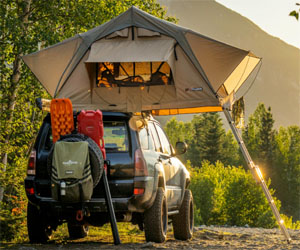 One of the most captivating aspects of outdoor living is the opportunity to break free from the trappings of modern life. As we venture into the wilderness, we leave behind the constant notifications, the urban noise, and the pressures of our busy schedules. In the absence of technology, we find ourselves enveloped in the pure and untamed beauty of the environment, a setting where we can truly disconnect from the digital world.
One of the most captivating aspects of outdoor living is the opportunity to break free from the trappings of modern life. As we venture into the wilderness, we leave behind the constant notifications, the urban noise, and the pressures of our busy schedules. In the absence of technology, we find ourselves enveloped in the pure and untamed beauty of the environment, a setting where we can truly disconnect from the digital world.
The beauty of outdoor living reveals itself in the small and simple details that are often overlooked in our daily lives. It's in the subtle hues of a sunset, the rustling of leaves in the wind, the songs of birds welcoming the dawn, and the sound of flowing water in a pristine stream. As we immerse ourselves in the great outdoors, we gain a newfound appreciation for these nuances that often escape us in the urban rush.
Outdoor living is an invitation to reconnect with nature and rediscover our most primal instincts. Setting up camp, gathering firewood, and preparing meals over an open flame connect us to the essentials of survival. It fosters a sense of self-sufficiency, resilience, and resourcefulness, and in doing so, we deepen our understanding of the environment that sustains us.
Moreover, the beauty of outdoor living is about forging deeper connections with friends and family. Campfires become the gathering place for stories and laughter, where the bond of shared experiences is strengthened. The simplicity of outdoor living provides a unique setting for building and nurturing relationships, away from the distractions of modern life.
A Fusion Of Fun And Finesse
 Accessibility: The essence of pickleball is rooted in its accessibility. With a smaller court and a slower-paced game compared to many other racquet sports, it's an ideal choice for players of all skill levels and physical conditions. Whether you're a child or a senior, a novice or an experienced athlete, pickleball offers an inclusive and welcoming environment. The low barriers to entry make it easy for anyone to pick up a paddle and give it a try.
Accessibility: The essence of pickleball is rooted in its accessibility. With a smaller court and a slower-paced game compared to many other racquet sports, it's an ideal choice for players of all skill levels and physical conditions. Whether you're a child or a senior, a novice or an experienced athlete, pickleball offers an inclusive and welcoming environment. The low barriers to entry make it easy for anyone to pick up a paddle and give it a try.
Laughter And Camaraderie: A defining feature of pickleball is the frequent exchange of laughter and camaraderie on the court. It's a sport where players often engage in friendly banter and share in the joy of play. The casual and social nature of pickleball fosters connections and friendships among participants. Even in the midst of intense rallies, the lighthearted spirit of the game prevails.
The Rally Dance: Pickleball's signature rally dance, characterized by quick and rhythmic back-and-forth exchanges, is where the essence of finesse becomes evident. The game challenges players to find the delicate balance between power and precision. Mastering the ability to place the ball with accuracy is a fundamental aspect of the sport, and it's this finesse that keeps players engaged and enthralled.
Strategy: While pickleball is easy for beginners to pick up, it offers a wealth of strategic depth for those who seek it.
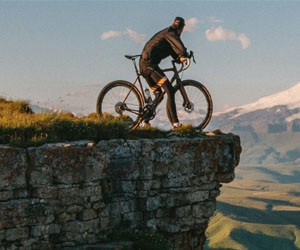
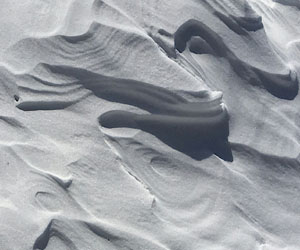


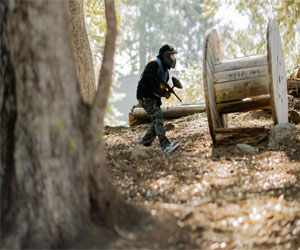
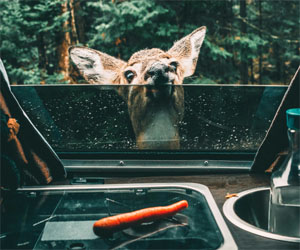
 Concealment And Ambushes: One of the oldest tricks in the book, concealing your presence and setting up ambushes can catch your opponents off guard. Blend into your surroundings, take advantage of natural cover, and wait for your opponents to walk into your line of fire.
Concealment And Ambushes: One of the oldest tricks in the book, concealing your presence and setting up ambushes can catch your opponents off guard. Blend into your surroundings, take advantage of natural cover, and wait for your opponents to walk into your line of fire.
Suppressive Fire: Suppressing your opponents by laying down a barrage of paintballs keeps their heads down and prevents them from making strategic moves. This tactic can provide cover for your teammates to advance or reposition.
Flanking Maneuvers: Outflanking your opponents is a classic cunning tactic. By taking a wide route to the side or rear, you can catch them in a crossfire, making it difficult for them to defend themselves effectively.
Communication And Coordination: Effective communication is a cornerstone of cunning tactics in paintball. Work with your team to share information about the enemy's positions and movements. Coordinate your actions to capitalize on weaknesses in your opponent's defenses.
Discovering The Diverse Homes Of Avian Wonders
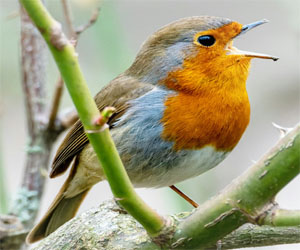 Biodiversity Hotspots: Bird habitat exploration often leads to encounters with a wide array of species, both avian and non-avian. Many birdwatchers are surprised by the diversity of life they discover in these natural areas. These hotspots of biodiversity are crucial for the survival of countless species, making them a focus of conservation efforts.
Biodiversity Hotspots: Bird habitat exploration often leads to encounters with a wide array of species, both avian and non-avian. Many birdwatchers are surprised by the diversity of life they discover in these natural areas. These hotspots of biodiversity are crucial for the survival of countless species, making them a focus of conservation efforts.
Understanding Niche Occupancy: Different bird species have evolved to occupy specific ecological niches within their habitats. Observing these niches can reveal intricate patterns of competition and cooperation among species. For example, in a wetland habitat, various bird species may have distinct feeding strategies, such as waders probing in the mud and waterfowl foraging on the surface.
Migration And Seasonal Changes: Bird habitat exploration allows us to witness the remarkable journeys of migratory birds. These avian travelers cover vast distances between their breeding and wintering grounds. Birdwatchers in these habitats can experience the excitement of witnessing the arrival of migratory flocks, marking the changing seasons.
Conservation Insights: Understanding the habitats that birds rely on is critical for conservation. Many bird species are dependent on specific habitat types, and these areas are often threatened by habitat destruction and climate change. By exploring bird habitats, we can better appreciate the urgency of conserving these vital areas and work towards their protection.
Educational Opportunities: Bird habitat exploration offers rich educational opportunities. It can be a valuable tool for teaching ecology, environmental science, and biodiversity. Schools, nature centers, and environmental organizations often organize field trips to bird habitats to engage students and the public in conservation efforts.